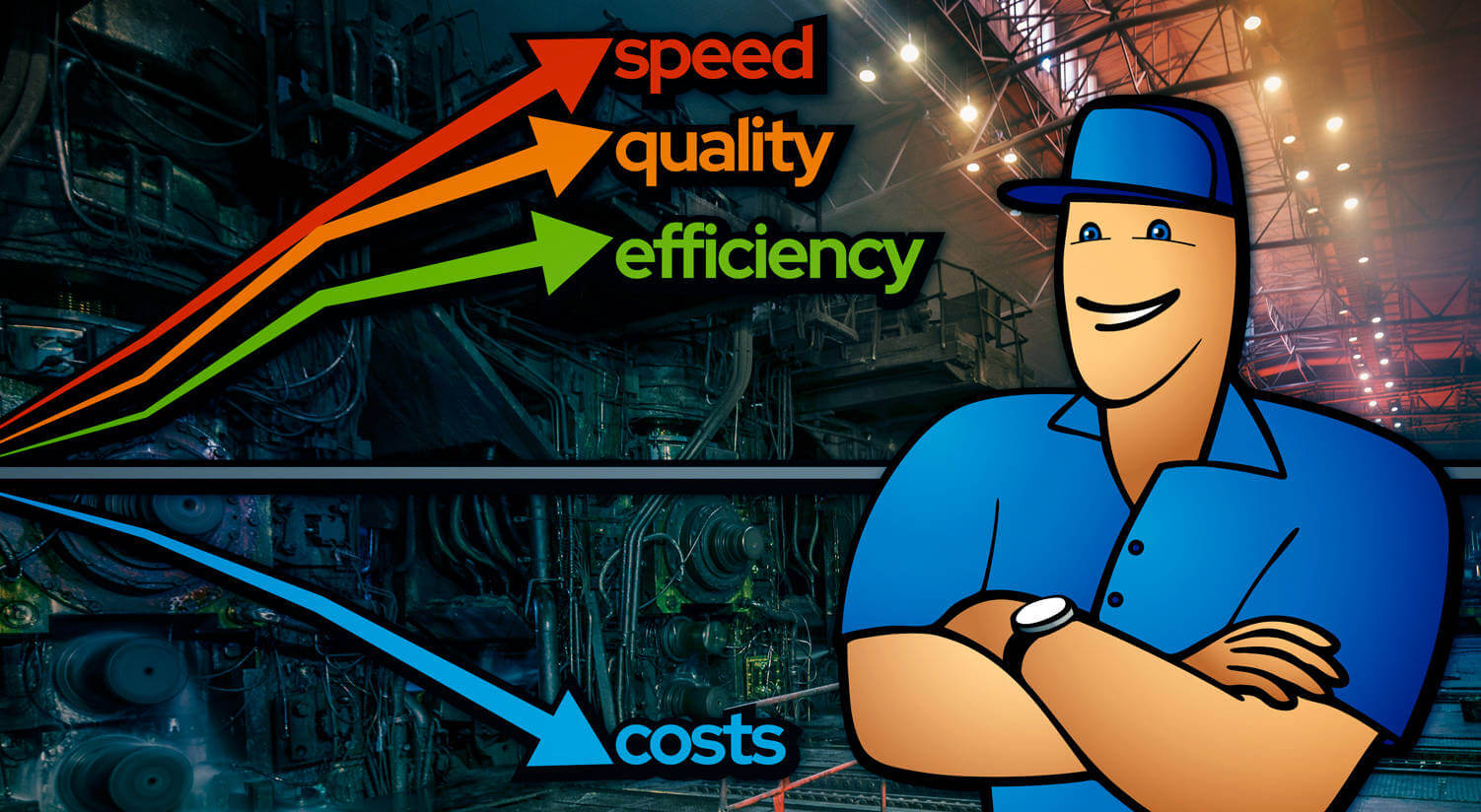Selling Price Formula – How To Find the Right Sales Price?
Regardless of the product, every company must have the best possible pricing strategy set up to ensure success. Even the best companies can find themselves in difficult financial situations with a bad pricing strategy. In this post, we take a look at how to reach an informed sales price.

What is the selling price?
The selling price is the amount of money that a company charges for its product. It goes beyond the total cost of the product, also known as the cost price, to also include a profit margin which is usually added as a markup percentage. The selling price is also called the sales price or standard, list, or market price. While these are used in slightly different cases, all of them designate the price that a company sells its goods for.
For example, the standard price usually marks the baseline rate at which a product is offered to customers, serving as a reference point for discounts or special offers. Market price, on the other hand, reflects the prevailing industry rate of a type of good and is often influenced by supply and demand dynamics. These terms help businesses establish competitive and sustainable pricing strategies.
The selling price may be static or dynamic. It may fluctuate based on seasonality, spikes and dips in demand, or direct pressure from competitors. Different goods are sold through different distribution channels, too – some manufacturers sell direct-to-consumer (D2C), others to retailers and wholesalers, and others still to both. Because of this, consumers may find the same product, or close versions of it, available at different prices.
What is the average selling price?
The average selling price (or ASP) is a key performance indicator (KPI) that denotes the average price a product was sold at over a period of time. ASP can be found using the sale price of an item. It’s simply calculated by dividing the total revenue of a product (or the sum of the selling price of sold units) by the number of units sold.
Business owners often track this KPI meticulously to capture price fluctuations and ensure that sales remain at profitable levels. ASP is a crucial metric to gauge competitor pricing, determine the perfect market entry point, or identify market pricing trends. It offers easy insight into what customers have been willing to pay for a product over time and what a competitive price point may be.
How to calculate the selling price?
Product pricing fluctuates across classes of goods and also differs by industry. For example, commodified goods often operate using fractions of a penny in their costing and sell at shallow margins. This is because the product is mass-produced so efficiently that it’s easier to measure profits in the volume of product sold, rather than units sold. Other industries produce high-end make-to-order (MTO) or engineer-to-order (ETO) goods that are complex in design and command a higher price per individual unit.
Put simply, different circumstances demand different pricing strategies to reach profit targets. There are many methods available for calculating selling prices, ranging from simple formulas like cost-plus pricing to more nuanced ones that guard against fluctuations in variable and fixed costs, such as contribution margin pricing. Let’s delve deeper into the different methods and look at some examples.
Cost-plus pricing and simple markup price
Cost-plus pricing is one of the most common methods for price calculation and is also the simplest. In cost-plus pricing, a company tallies all costs associated with manufacturing a product from materials and labor costs to overheads, and then adds a fixed amount of cash on top as profit. Markup pricing is essentially the same thing except here, the desired profit margin is added as a percentage.
Selling price = cost + (cost x markup percentage)
Example: After tallying up the cost price of its product – $300, a make-to-order battery system manufacturer looks at the price of its main competitors. The three most directly competing products cost $400, $380, and $450. To attempt a competitive entry into the segment, the company settles on a fixed $90 profit margin to arrive at a selling price of $390.
Planned-profit pricing
This pricing model has the same logic as cost-plus pricing but also takes into account variable costs, i.e. cost changes relative to the manufacturing volume. It might be that producing more units in a production run is more effective than producing few, or maybe a supplier offers better prices when components are purchased in bulk. Whatever the case, to determine the planned profit price, a company will first conduct a break-even analysis which uncovers the number of units that should sell at a given volume to cover the cost. Next, a markup is added similar to the above method.
Example: The battery manufacturer has a deal with one of its vendors – for bulk purchases of 20 or more battery elements, they offer a 20% discount on the order. However, this saving is largely offset by increased storage costs. This lowers the cost price per unit for the battery packs to $270 but only for larger orders. To boost competitiveness while retaining the same profit margin, the manufacturer settles on a discounted price of $360 for large orders. By utilizing the volume break in the components’ direct cost, both pricing tiers deliver the same margin.
Gross Profit Margin Target (GPMT)
This pricing method aims to retain a preset profit margin across the company’s whole product mix. The Gross Profit Margin Target (or GPMT) is defined as the sales revenue percentage left after subtracting the cost of sales and production. This KPI can be used to find the optimal sales price for all products to maintain a gross margin. It is a good strategy for companies that carry several classes of different products and seek to hold a specific margin across each category or class.
First, the cost of goods sold (COGS) for a fiscal period is subtracted from the total revenue. This will return the gross profit. Gross profit is then divided by revenue to return the gross profit margin percentage.
Gross profit = revenue – COGS
Gross profit margin = (gross profit/revenue) x 100
Example: The battery manufacturer has three distinct products on the market. Last year’s revenue across all products amounted to $140,000 while the cost of goods sold was $109,000. This makes the gross profit for the period $31,000. The gross profit margin is therefore 31,000/109,000 x 100, or 28.4%. If the company wants to match last year’s gross profit, it must either sell as many goods with a 28.4% profit margin or increase the margin in case sales numbers dwindle.
Whatever the Market Will Bear (WMWB)
This pricing calculation relies on a couple of critical points for sales. In one case, there may be no competition or the competition may be scarce. On the other, the demand or brand reputation may have such a lure to consumers that the company can charge much higher prices than other goods classes. Either way, the profit margin is set as high as demand allows. Aiming too high may encourage competition to enter the space at much lower pricing to “buy the business” and shift market share away. However, many products are so sought after that consumers are willing to bear the burden of higher prices.
WMWB is scarcely a sustainable long-term strategy. If a product can be hugely capitalized on, it’s usually just a matter of time before a competitor steps in. Sky-high prices of the product may then undermine a company’s reputation as consumers realize the true item cost.
Example: The battery company has one product in its product mix that always sells out fast. Since there are no direct competitors in the segment, the company has steadily increased the sales price of the product, carefully keeping an eye on sales numbers.
Competition and customer-based pricing
Competition-based pricing takes into account the pricing strategies of other similar products on the market. A comprehensive analysis of competitors and their pricing is paramount. Markers to look out for include the number, size, and even perceived financial situation of competitors, the number of competing products and their pricing methods, the status of substitutive products or indirect competitors in the market, etc.
Customer-based pricing, a.k.a value-based pricing, aims to determine the ideal profit margin by analyzing the demand and sales numbers of a target market in an attempt to gauge the perceived value of a product. Here, customers’ buying habits, purchasing decisions, and sales volumes need to be analyzed to reach informed decisions. Various tactics may additionally be employed to affect perceived value such as rebranding, upselling, bundling, customer segmentation, promotions, etc.
Example: As we saw in the cost-plus pricing method, an example of competition-based pricing is to determine a viable profit margin by analyzing the prices of a product’s top competitors and settling on a good middle ground.
For value-based pricing, suppose our battery company has a well-selling battery bank but also wants to boost the sales of a new product, a rapid charger. Instead of lowering the sales price of the charger, the company decides to bundle it with the battery bank, boosting the perceived value of the products through a deal.
Best practices for a successful pricing strategy
Establishing a pricing strategy that aligns with a company’s business goals and customer expectations is essential for long-term success. Finally, let’s look at four tips to help you develop an effective pricing strategy.
1. Understand your costs
Before setting prices, it’s crucial to have a deep understanding of your costs. This includes not only the direct costs of production but also indirect costs such as overhead, marketing, and distribution expenses. By accurately gauging the cost structure, you can ensure that your pricing covers all expenses while allowing for a reasonable profit margin. This is particularly important for businesses using cost-plus or contribution margin pricing methods.
Implementing an ERP or MRP system can be a game-changer in understanding costs. These systems provide real-time visibility into various cost components, including raw materials, labor, overhead, and operational expenses. By automating data collection and analysis, businesses can accurately track costs, identify cost-saving opportunities, and make data-driven pricing decisions. All of this can contribute hugely to developing a more informed pricing strategy.
2. Analyze your market and competition
Even if you’re employing mostly a value-based pricing strategy, thoroughly analyzing the market and competitors is still essential. Identify similar products or services in your industry and examine their pricing strategies. Are they using cost-based pricing, value-based pricing, or something else?
Consider the size and financial situation of your competitors, as well as any unique selling points they might have. Understanding your market and competition will help determine where your product or service best fits in and how to position it more effectively. Furthermore, delve into the historical financial reports to gauge long-term trends.
3. Know your customer
Conversely, even if focused on perfectly positioning your products amid competitors, understanding the target audience is critical for successful pricing. Analyze customers’ buying habits, preferences, and the value they place on your and similar products. Conduct market research to gather insights into customer perceptions and expectations. By aligning the pricing with the perceived value to your customers, you can maximize revenue while meeting their needs.
Utilizing a Customer Relationship Management (CRM) tool can be instrumental in both competition and customer-based pricing. A CRM system allows for gathering and managing customer data, their buying trends, and preferences by tracking customer interactions. This valuable information can inform future pricing decisions, enabling you to align your prices with what your customers value most. Furthermore, a CRM tool can support targeted marketing efforts, promotions, and customer segmentation to enhance the perceived value of products, thus contributing to your pricing strategy’s success.
4. Flexibility and testing
A successful pricing strategy is not static but should constantly evolve. Be open to adjusting prices based on market changes, customer feedback, and performance data. Consider running pricing experiments or A/B tests to gauge the impact of different pricing strategies on sales and profitability. Regularly review and refine your pricing to stay competitive and responsive to market dynamics.
In conclusion, developing a successful pricing strategy involves a combination of understanding your costs, analyzing the market and competition, knowing your customers, and maintaining flexibility. It’s an ongoing process that requires continuous monitoring and adjustment, much of which can be largely simplified by utilizing modern productivity software.
Key Takeaways
- The selling price is the price at which a company is willing to sell its product to a customer. It encompasses more than just the cost of a product and includes a profit margin which is added as a markup.
- Monitoring the average sales price (ASP) is essential in gauging customer willingness to pay and competitive pricing trends. ASP is calculated by dividing the total revenue by the number of units sold.
- Different products and industries demand diverse pricing strategies. From cost-plus pricing to planned-profit pricing, companies must choose the method(s) that best aligns with their business model and profit goals.
- A successful pricing strategy requires a deep understanding of the market, competition, and customer preferences. Pricing should never be static because markets, trends, and economies constantly shift.
- Implementing a manufacturing ERP system is a pivotal step for producers in understanding and managing costs effectively. These systems offer real-time visibility into cost components and automate data collection and analysis. With ERPs, companies can make more informed decisions, identify cost-saving opportunities, and optimize their pricing strategies to enhance profitability and competitiveness.
Frequently asked questions
The basic calculation for finding a good sale price is to first tally up the total costs of production and then add a profit margin. In turn, there are numerous methods available for finding a good profit margin like planned-profit pricing or gross profit margin target.
Normal selling price refers to the average selling price of a product over time. It is calculated by taking the total revenue of a product or product line and dividing it by the number of units sold.
Cost price refers to the total cost of producing an item. It includes the total costs of manufacturing the item as well as its distribution and marketing costs. The selling price, however, is the price at which the product is sold to customers. The selling price is essentially the sum of the cost price and profit margin.
You may also like: What Is Cost of Quality and How to Calculate It?




